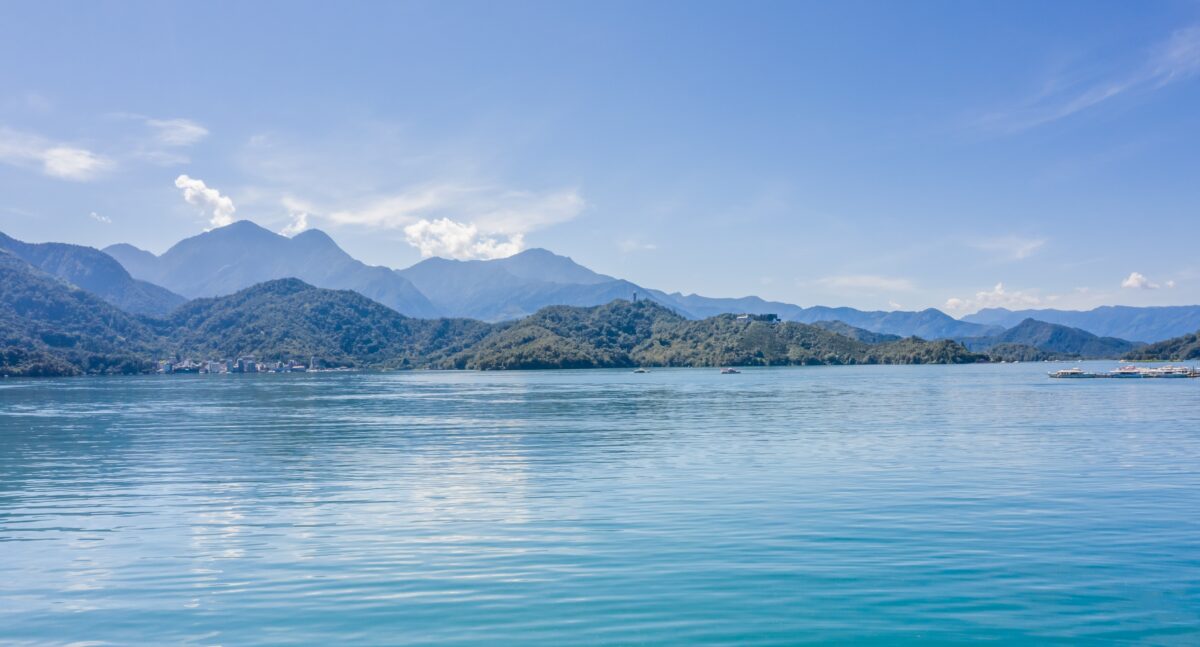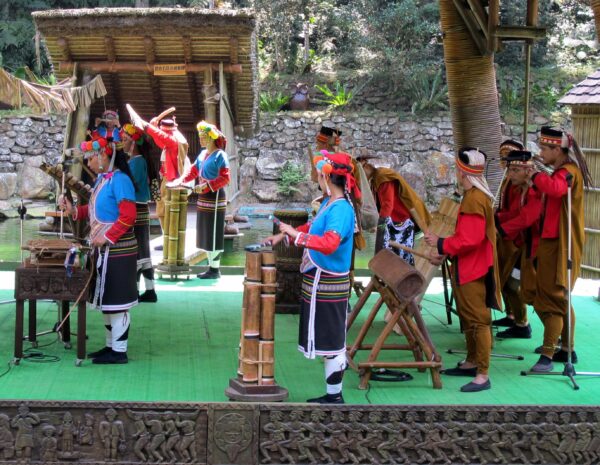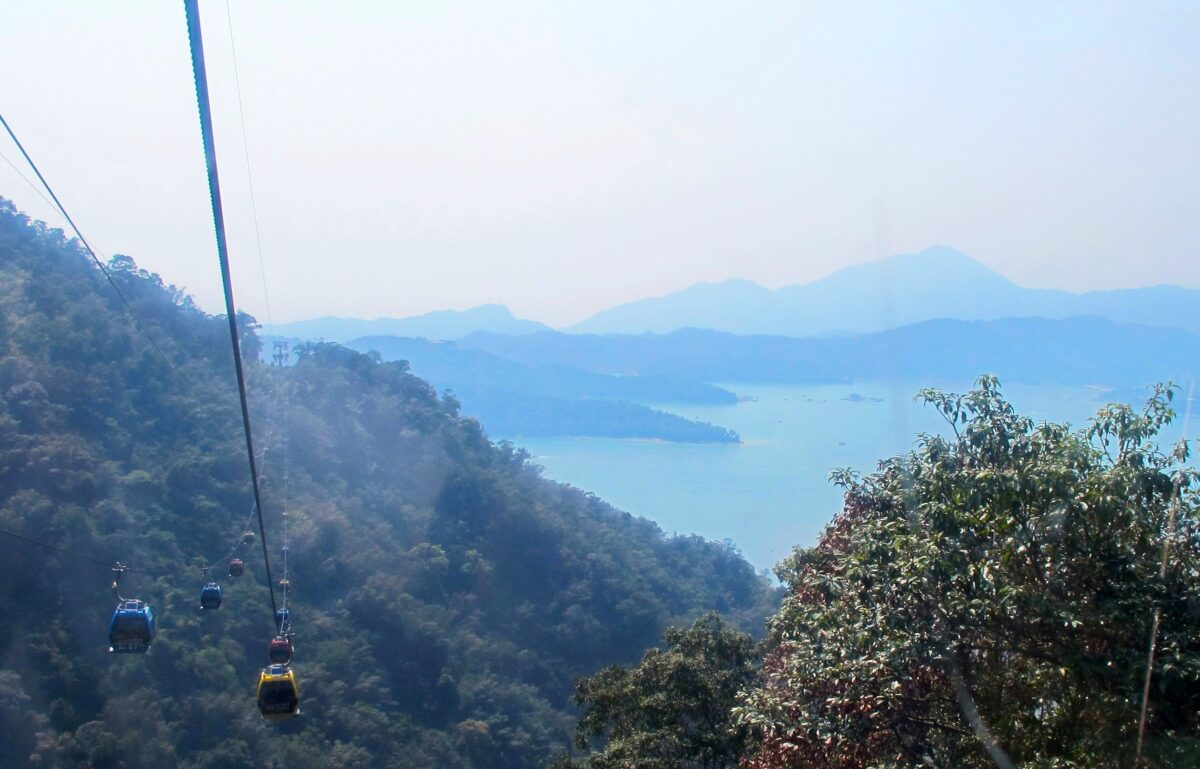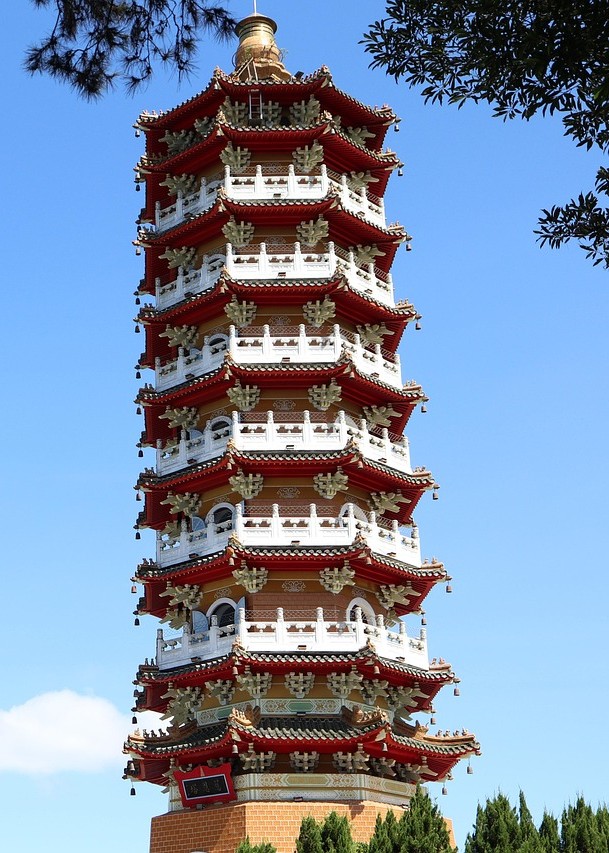 Sun Moon Lake is a place to kick back and relax. Whether you unwind on your balcony at The Lalu — one of Taiwan’s very best hotels — or find yourself slipping into a pleasantly empty state of mind while travelling by ferry from Shuishe to Ita Thao, you’ll agree that there’s something truly tranquil about Taiwan’s largest lake and the mountains that surround it.
Sun Moon Lake is a place to kick back and relax. Whether you unwind on your balcony at The Lalu — one of Taiwan’s very best hotels — or find yourself slipping into a pleasantly empty state of mind while travelling by ferry from Shuishe to Ita Thao, you’ll agree that there’s something truly tranquil about Taiwan’s largest lake and the mountains that surround it.
Taiwan’s largest body of water (7.93 m2 / 3.06 square miles) has existed since time immemorial, but it owes its current size to the Japanese colonial administration that ruled the island from 1895 to 1945. During the first quarter of the 20th century, Taiwan was rapidly industrialising. Dozens of new sugar refineries and factories needed electricity, so the colonists dammed the basin, causing water levels in two adjacent lakes to rise until they merged. Nowadays the lake and the facilities downstream from it generate as much energy as a mid-sized nuclear power station. What’s more, the system functions as a giant battery, storing energy by pumping water uphill when there’s a surplus, then releasing it to run through turbines when the grid is thirsty.
How did the lake get its name? The round eastern part is said to be shaped like the sun; the southern section, by contrast, resembles a sickle moon. Unless there’s a serious drought — like the one that afflicted the entire country in 2021 — the lake’s surface is 748m above sea level and in places the water is 30 m / 98 ft deep. But long before it was Sun Moon Lake, it was known as Zintun to the Thao indigenous people. For a while, English-language sources referred to it as Lake Candidius, in honour of Georgius Candidius (1597–1647), the first Dutch missionary to work in Taiwan. It’s not clear why, however: He never set foot in Central Taiwan, however, being active in and around the Dutch outpost in what’s now Tainan.
Whether you opt to stay overnight or make it a day trip, here are Sun Moon Lake’s principal attractions, moving clockwise from the north.
Wenwu Temple
In traditional Chinese philosophy and government there were two essential spheres: the civil (wen) and the military (wu). The former encompassed culture, literature, scholarship, refinement, civilisation, and moral cultivation. Officials, who were expected to be masters of rites and conduct, gained office by passing examinations. The latter is the realm of martial prowess and physical strength. Soldiers defended but were subordinate to the civil order.
This division extended to religion, and the only reason why this corner of Taiwan has a hall of worship that unusually combines both sides of the coin is the expansion of Sun Moon Lake. When rising waters threatened two temples — one wen and one wu — precious items from both were evacuated to a prime spot above the north shore and consolidated to establish a new, unified Wenwu Temple.
Sightseers outnumber worshippers and the buildings are less than 60 years old, so Wenwu Temple feels quite different to the historic and richly decorated shrines you’ll see in Tainan or Lukang. Don’t skip it for those reasons, however. The view from it over the lake is justification enough to spend some time here.
 Taiwan’s top cable-car experience?
Taiwan’s top cable-car experience?
I’ve added a question mark because some say the Maokong Gondola, which links Taipei Zoo with the tea-growing hills around Maokong in the southeastern corner of Taiwan’s capital, is even more fun than the seven-minute cable-car ride between the edge of Sun Moon Lake and the Formosan Aboriginal Culture Village. But let’s not quibble: In this writer’s humble opinion, you should try to do both during your private guided tour of Taiwan.
The Sun Moon Lake Ropeway offers exceptional views over the lake and surrounding hill country, plus a comfortable and stable ride. For an even more thrilling experience, board one of the glass-floored ‘crystal’ cabins for no additional charge. If you’re travelling with kids, you might have trouble tearing them away from the Formosan Aboriginal Culture Village, as — in addition to several displays of indigenous heritage — there’s a full theme-park’s worth of roller coasters, a log flume ride with drops, and Taiwan’s tallest free-fall ride.
Ita Thao
The aforementioned Thao people are one of Taiwan’s smallest ethnic groups, numbering fewer than 900 as of mid-2025. Before the waters rose, they lived at various locations along the lake’s edge and also on Lalu Island. Because much of that islet was inundated in the 1930s, the Thao living there relocated to a new settlement, now called Ita Thao, on the eastern side of lake. During the major earthquake of 1999, parts of Lalu Island collapsed, leaving the just the merest sliver of dry land. According to the traditional belief system of the Thao (who, like the majority of Taiwan’s indigenous people, are now mostly Christian) the tribe’s highest ancestral spirit dwells there, so the possibility that the islet could entirely disappear is one that alarms tribal leaders.
You won’t see much indigenous character in Ita Thao. The buildings are modern and few tribespeople wear traditional attire. That said, it’s possible to enjoy Austronesian cuisine at at least three establishments, and its proximity to the lakeside cable car station is a definite plus when you’re deciding whether to stay here or in Shuishe.
Reverance for a monk, love for a mother
Continuing clockwise from Ita Thao, the road passes near two shrines and a tower; it’s possible you noticed the latter from the other side of the lake. The first of these sites is Xuanzang Temple, named after one of the most famous monks in East Asian history. Xuanzang, who lived from 602 to 664, was one of scores of Chinese Buddhists who set out on foot from northern China, crossed the Himalaya into what’s now Pakistan, and then made his way to northern India. There he studied Buddhist texts and began translating them into Chinese. Some 17 years after his departure, he returned to China where he was granted an audience with the emperor. He’s remembered not only for his contribution to the spread of Buddhism but also because his epic journey inspired a fantasy novel that was written several hundred years later. Its Chinese title is usually translated as Journey to the West, but a generation of non-Asians know it through the 1970s Japanese TV drama shown in English-speaking countries under the title Monkey.
A fragment of skull bone said to have been Xuanzang’s is the holiest relic held by Xuanzang Temple. This isn’t the only place where Taiwanese Buddhists venerate human remains: A tooth the faithful believe once belonged to the Lord Buddha himself is the centrepiece of Fo Guang Shan Buddha Museum in Kaohsiung. A short drive from Xuanzang Temple, Xuanguang Temple is also associated with the revered monk.
Cien Pagoda is very different in appearance. Its construction was ordered in the early 1960s by Chiang Kai-shek, who wanted a fitting memorial to his mother; she died in 1921 before Chiang began his rise to national and then international prominence. Because it’s a bit of a walk uphill from the nearest car park, the pagoda never gets as crowded as other attractions around the lake. Climbing the stairs to the upper levels is well worth it for the near 360-degree views. The height of the pagoda was decided so it’d be precisely 1,000m (3,281 ft) above sea level.
Interested in Sun Moon Lake?
Sun Moon Lake is one of Taiwan’s 13 national scenic areas, and the official website provides a great deal of information about the area. For a tailor-made private Taiwan tour itinerary covering as much or as little of island as you want, carefully put together to match all your needs and preferences, contact Life of Taiwan today. Nothing makes us happier than making international visitors to Taiwan happy!


 Taiwan’s top cable-car experience?
Taiwan’s top cable-car experience?